Abstract
Tambakrejo Beach in Blitar Regency is classified as an area that is very vulnerable to tsunami catastrophes. Many researchers have conducted studies on regions impacted by the tsunami. However, more studies into the link between the outcomes of social and spatial studies still need to be carried out because these are two different perspectives with different parameters and variables. The novel approach in this research involves delineating tsunami-affected areas and assessing population capacity in coastal regions. The hazard maps and livelihood asset variables using grid cells of a specific size have been used to identify risk levels. The grid cells used are 50 m2 × 50 m² so that they are expected to represent the minor units on the face of the earth, such as buildings, assets, property or land parcels, for capacity assessments or measuring the level of threat to disasters and are no longer based on regional administrative boundaries.
Contribution: The research results show that using grid cells to analyse areas affected by the tsunami can provide excellent and informative results. Research findings at the research location regarding community preparedness in facing tsunamis show that communities at risk of being affected by the tsunami need to increase their capacity because the majority of communities in coastal areas, especially in the Sidorejo sub-village, have been identified as having low capacity according to several livelihood asset parameters such as financial capital in income. By increasing individual capacity, it is hoped that society will be able to avoid the threat of tsunami waves better.
Keywords: tsunami; grid map; livelihood asset; community preparedness; hazard maps.
Introduction
The southern coast of the island of Java experiences a high frequency of natural disasters, such as earthquakes and tsunamis. This is because the coast is directly adjacent to the Indo-Australian fault, so a shift in the fault can trigger a tectonic earthquake and potentially cause a tsunami (Usman, Wicaksono & Setiawan 2016). Despite extensive research on the physical impacts of these disasters, there remains a significant gap in integrating social and spatial dimensions to understand and mitigate these risks comprehensively.
From January to December 2023, the number of tourists visiting Blitar Regency reached 2 833 877 people, with details of 673 foreign tourists and 2 833 201 domestic tourists. This number has increased by 9.1% compared to the year 2022. Based on the recap of data on tourist visits in 2023, Tambakrejo Beach is ranked 1st as a tourist attraction with the highest number of visitors, followed by Kampung Coklat and Serang Beach in the second and third place (Kurniawan 2024; Rizki 2024).
Tambakrejo Beach is in Blitar Regency, located in a bay about 10 km long. The jobs of most of the people around Tambakrejo Beach are fishermen, traders and farmers. To meet their daily needs, people use income from fishing. As time went by, Tambakrejo Beach began to become busy with tourists. Tambakrejo Beach, Blitar, is one of the beaches on the south coast of Java Island. Tambakrejo Beach is also a major natural tourist destination in Blitar Regency and has many tourist visits. According to the Blitar Regency tourism office, the number of tourists visiting Tambakrejo Beach, Blitar, was more than half a million in 2023, with 645 535 tourists, to be precise. Local tourists from Blitar Regency still dominate tourists who visit Tambakrejo Beach, Blitar. Still, many tourists from outside Blitar Regency visit, such as Malang, Tulungagung, Trenggalek, Ponorogo, et cetera (Zaenab 2022).
This research aims to identify areas affected by the tsunami by delineating areas potentially affected by the tsunami using elevation data in coastal areas. Using grids and cells in spatial data aims to identify the risk level of tsunami-affected areas based on elevation data and grids overlaid on top of the spatial data. This research also identifies social conditions based on livelihood asset parameters. Overlaying coastal regions prone to tsunami exposure with the results of social identification of coastal communities was then used to produce a tsunami risk map. In this research, the grid cell size used is 50 m2 × 50 m² with the hope that parcels and housing units can fit into the available grid cells and display more informative spatial analysis results (He et al. 2023). This approach provides a more detailed and valuable perspective. This approach comprehensively evaluates how physical risks intersect with community assets, livelihoods and preparedness measures. By combining hazard maps with livelihood asset variables in specific grid cells, a more detailed comprehension of risk levels can be achieved, facilitating the development of focused and efficient disaster response strategies.
Figure 1 shows the research location: Tambakrejo Village, Blitar Regency, East Java Province, Indonesia. Geographically, Tambakrejo Village is located at 8°18’52.75” South Latitude and 112°08’33.25” East Longitude, with an average air temperature of 24°C–34°C. The height in Tambakrejo Village ranges from 0 m to 125 m above sea level. Demographically, Tambakrejo Village has an area of 4.89 km², with a percentage of area to sub-district of 2.97%. The population in Tambakrejo Village is 5530 people, and the population density in Tambakrejo Village is 1130 people/km² (Faizal 2014).
 |
FIGURE 1: Map of Tambakrejo village, Blitar Regency, East Java Province, Indonesia. (a). Elevation map of Tambakrejo Village on the right (b). Satellite image and elevation contours of Tambakrejo Village. |
|
The previous research shows that identifying tsunami-affected areas can be represented informatively using a grid cell system. Meanwhile, the smallest unit of social analysis, which usually uses certain administrative boundaries, such as a sub-village or village, can be presented in more detail using a grid cell system (He et al. 2023; Sun et al. 2023; Wang et al. 2023a). This research enhances our comprehensive comprehension of catastrophe risk management by integrating social and spatial studies into a unified framework. Integrating many components is essential for developing adaptable and robust communities that can survive the effects of tsunamis and other natural calamities.
Literature review
Maps are usually used to inform land cover on the earth’s surface, such as vegetation, buildings, road networks, etc. (Farhan & Akhyar 2017; Li & Bacete 2022). Many researchers commonly use spatial data to display an area’s social, economic and cultural conditions. However, its use often displays general maps such as demographics, ethnic groups, education levels and financial capabilities. However, it refers to certain administrative boundaries, such as the level of education in villages in sub-districts or districts (Fefta et al. 2023), because the base map used always refers to efforts to simplify the results of data collection at certain administrative boundaries (Kassouk et al. 2014).
According to the UNDRR (United Nations for Disaster Risk Reduction) terminology, disaster risk is defined as the potential loss of life, injury or destroyed or damaged assets that can occur in a system, society or community within a certain period, which is determined probabilistically as a function of danger, exposure, vulnerability and capacity (Djalante & Garschagen 2017; Lindell 2013). Technically, this is defined through a combination of three parameters: hazard, exposure and vulnerability. When a dangerous event such as a flood, earthquake or tsunami occurs, which triggers loss of life and damage to infrastructure, this will directly impact the community and its assets, which are vulnerable to these events. When discussing disaster risk management, a disaster can highlight the following things in a community, such as the geographic area where the community lives is vulnerable to exposure to hazards or the community (including individuals) and the infrastructure, assets and property and services that may experience damage or destruction as a result. Disaster variables such as location, the strength of disaster, previous occurrences and future disaster probability are in the vulnerable group as natural hazards (Ayuningtyas et al. 2021; Fadly, Murakami & Kurniawan 2023; Ma et al. 2019; Sakamoto et al. 2020).
Figure 2 shows the relationship between natural hazards, community assets and risk. Risk occurs only if a disaster impacts society or assets, causing losses. If it does not cause risk, it certainly does not harm the community or loss of assets in the form of buildings, financial assets or others (Shoimah, Usman & Hariyani 2021, 2022; Usman et al. 2021). In this research, the delineation of areas prone to being affected by tsunami waves is based on elevation data. Meanwhile, to measure community assets, not only by looking at the condition of the distribution of settlements, buildings, natural environment and economic activities in Tambakrejo Village, analysis of questionnaire results with livelihood asset parameters was also carried out in this research. The administrative boundary for the research is Tambakrejo Village, Blitar, East Java Province.
 |
FIGURE 2: Venn diagram of the relationship between disasters, community assets and risks. |
|
However, to display the condition of the distribution of social data or the results of other social studies is to display a map based on a grid cell system with a grid size of 50 m2 × 50 m2 (He et al. 2023; Wang et al. 2023b). Several researchers integrate intelligent and green city planning approaches to contribute to urban sustainability positively. In particular, the use of participatory Geographic Information System (GIS) presents a tool to combine technological approaches in urban planning with an agenda of more equitable nature-based solutions with input from community opinions and more subjective perspectives (Maurer et al. 2023; Roy et al. 2024). For example, analysis of social vulnerability to flooding becomes an integrated part of the flood risk management process. The strategies and policies developed focus on risk-reduction methods that increase the resilience of vulnerable communities (Ajtai et al. 2023).
Academics and policymakers are increasingly aware of the importance of social capital in responding to and recovering from shocks and disasters. Using Google Maps, carrying out truth measurements and mapping social infrastructure with direct observations of location to evaluate the accuracy of available data can be used to build more real social maps (Fraser et al. 2022).
In several studies and research on livelihood assets and disasters, several researchers can show a very close correlation between each asset or capital with non-linear impacts on other capital, such as increasing social capital and developing human assets that can make a significant contribution. Significant impact on resilience to the impacts of climate change or other impacts that differ for each of the capital parameters is analysed (Daly et al. 2020; Hendratmi et al. 2022; Liu et al. 2023; Liu-Lastres et al. 2020; Nakagawa & Shaw 2004; Tufa & Megento 2022). Because the influence of each capital is so significant and closely related to community or individual preparedness efforts in facing disasters, this research also adopts a technical approach and study using parameters found in livelihood assets such as social capital, financial capital, human capital, natural capital and physical capital.
Research methods and design
In this study, we adopted a 50 m × 50 m grid cell system to analyse disaster-affected areas and measure community assets in Tambakrejo Village, Blitar, East Java, Indonesia. Each grid cell was assigned properties and attributes based on high-resolution satellite imagery, digital elevation models (DEMs) and field surveys. These data sources helped define each cell’s physical characteristics, such as land use, elevation and proximity to critical infrastructure. To evaluate the capacity of each grid cell, we integrated physical attributes with socio-economic data. This integration involved assessing the resilience of structures based on construction type and age, economic stability from income levels and asset values and social cohesion from community surveys and demographic data. This comprehensive approach allowed us to calculate a capacity score for each grid cell, reflecting its ability to withstand and recover from tsunami impacts. The community assets include population, built environment, natural environment and economy. To define population conditions is not only based on the distribution of houses and residential areas in Tambakrejo Village but a survey is carried out using a questionnaire to determine community capacity based on several parameters such as educational background, expertise, financial ability, insurance, savings and asset ownership (livestock, houses, ponds, gardens, rice fields) (Fadly et al. 2023; Patterson, Weil & Patel 2010; Usman et al. 2023a). This research uses livelihood assets to measure community capacity based on natural, financial, human, physical and social capital.
Figure 3 is a research flow diagram comprising two study groups, namely studies of areas prone to being affected by the tsunami disaster using a spatial approach and community asset analysis using livelihood asset parameters to produce a social map based on the livelihood asset pentagon. Analysis of community assets using variables in the livelihood pentagon assets, including human capital (education, skills, knowledge, abilities and capabilities), natural capital (forest, river, ponds, trees, land), financial capital (income, credit, saving, investment), social capital (fisherman community, culture and religion) and physical capital (wave barrier construction, shelter, access road, infrastructure, health care facilities) (Fischer et al. 2021; Islam & Walkerden 2022; Usman et al. 2016, 2023b; Vecere et al. 2017).
The close relationship between the use of geospatial maps and disaster mitigation efforts has been widely carried out by disaster researchers. The results show that the use of data and spatial analysis is beneficial in making policies or technical efforts to determine integrated, fast, comprehensive and efficient disaster-management strategies (Ekaputra et al. 2022; Manfré et al. 2012; Mizutori 2020). Spatial data can clearly show areas affected by disasters or areas that are safe from disasters; so spatial data analysis in reducing disaster risk should be carried out before a disaster occurs as a mitigation measure (Appleby-Arnold et al. 2018; Gibson et al. 2016; Han et al. 2019; Ikeda & Inoue 2016; Kosaka et al. 2023; Norris et al. 2002; Shimura & Yamamoto 2014).
Figure 4 shows the differences in using a grid cell system and delineating disaster-prone areas using spatial analysis at the research location, namely in Tambakrejo Village, Blitar Regency, East Java. Both use primary data from the DEM, which then creates elevation intervals that represent three risk groups, namely the high-risk group with an elevation of 0 m – 10 m above sea level, the medium-risk group with an elevation of 10 m – 30 m above sea level, while those included in the low risk category with an elevation of 30 m – 50 m above sea level (Fadly & Murakami 2012; Joyce et al. 2009; Mahiddin, Affandi & Mohamad 2021; Valachamy et al. 2022).
 |
FIGURE 4: Difference between (a) grid cell system and (b) GIS delineation with digital elevation model analysis. |
|
Using spatial data and three-dimensional models in spatial analysis can display precise locations that can be used as shelters or temporary shelters when a disaster occurs (Xu et al. 2023; Zou et al. 2023). However, in this research, spatial analysis is limited to knowing the areas affected by the tsunami disaster in low-risk, moderate and high-risk areas. Meanwhile, the determination of the distribution of shelters is only based on community opinion, which was studied based on a questionnaire filled out by 578 respondents, because the local government has determined the distribution of shelters as evacuation places in the event of a tsunami wave in Tambakrejo Village, Blitar.
Ethical considerations
An application for full ethical approval was made to the Brawijaya University’s Research Ethics Committee and ethics consent was received in 2023. The ethics approval number is 43/UNl0/PN/2023.
Results
If Figure 4 shows the differences in analysis results using DEM spatial data converted into grid system form, Figure 5 is the result of overlaying three risk groups in grid system format in an area with land cover in the form of a built-area in Tambakrejo Village, Blitar Regency. Most of the built-up areas are high-risk areas, which directly impacts the strategic steps that must be taken to prevent significant losses if a tsunami disaster occurs in Tambakrejo Village. When looking at the size of a 50 m2 × 50 m² grid on a map, this grid size is still perceived as too large to identify the affected building units.
 |
FIGURE 5: Affected settlements and built-up areas based on the grid cell system. |
|
Breaking down the built-up areas into smaller grid units makes pinpointing specific structures at risk during a tsunami event easier. This level of detail allows for more targeted evacuation plans and disaster response strategies to be implemented in Tambakrejo Village. Additionally, by incorporating DEM spatial data into the grid system analysis, the area’s topographical features can be considered, further enhancing the accuracy of risk assessments.
When exploring the impact of built-up areas being classified as high risk, one key aspect is the effectiveness of current disaster prevention and response strategies. With the identification of specific structures at risk in Tambakrejo Village, authorities can tailor evacuation plans to ensure the safety of residents in those areas. Additionally, by incorporating topographical features into the analysis, emergency response teams can better understand the potential obstacles and challenges they may face during a tsunami event. This level of detailed planning and preparation is crucial in minimising the impact of disasters and thus saving lives.
Table 1 depicts the number of grids in each category of affected area, which refers to the map in Figure 5. With a 50 m2 × 50 m² grid, it is difficult to differentiate land cover in buildings into certain categories, such as private buildings, public buildings or other property assets. So, an explanation of the use of grid cells can be seen in Table 1 shows the number of buildings at risk of being affected by tsunami waves based on three risk groups: high-risk area, moderate and low-risk area.
| TABLE 1: Number of grid cells in a vulnerable area. |
Table 1 shows the number of grids and area size for each risk level in Tambakrejo Village’s vulnerable areas. Using a 50 m2 × 50 m² grid has simplified the calculation of the area affected because the calculation is based on the number of grids on the map. Table 1 refers to Figure 5, a map of the distribution of buildings and settlements at risk of being affected by the tsunami disaster. Based on Table 1, the area with a high-risk level is quite large, namely 13 825 m2 or 1.38 Ha, and the area with a medium risk level is 20 375 m² or 2.03 Ha, while the area with a low-risk level is 28 750 m² or 2.87 Ha. Meanwhile, the built-up area with a high-risk impact is 105 grids or around 2625 m2, and the built-up area with medium risk is 87 grids or an area of 2175 m², while the low-risk area is 55 grids or an area of 1375 m².
Using maps in grid form aims to obtain values in grid cells directly, namely by representing appropriate spatial data on a local and regional scale, then continuing by using the cross-check method and conventional measurements on land (Sun et al. 2023). The risk assessment method using spatial data can select and reflect targets or predictions of damage that arise from being directly affected by disasters. The indexation method using a grid map can increase the accuracy of raw data distribution, thereby minimising distortion of the disaster risk index, which is calculated manually using a computer. Disaster risk assessment on spatial data is based on an indicator-based approach, namely by using disaster risk maps and thematic data that use specific parameters for further analysis (Wang et al. 2023a). In this research, the grid cells on the map are given values based on elevation data and real conditions in the field to produce a map of areas at risk of being affected by disasters.
Table 2 shows the results of data collection based on a questionnaire filled out by 578 respondents who are residents of Tambakrejo Village. Table 2 is the result of community asset analysis using variables in the livelihood pentagon asset. Tambakrejo Village, Blitar, consists of two sub-village administrative areas: Krajan and Sidorejo. In this research, the pentagon asset graph is also differentiated based on the distribution of respondents in the two sub-villages. The results of the respondent data recapitulation show that the Krajan sub-village residents have better capacity even for each variable and sub-variable. For example, the financial capital in Krajan shows that residents in Krajan are more prosperous than Sidorejo in terms of income per capita, credit, savings, investment and insurance. Meanwhile, regarding the values of social capital variables such as cultural and religious parameters, both residents in Krajan and Sidorejo have social capital values that are not much different, except for the fisherman community, which is dominated by residents who live in coastal areas such as in the Krajan sub-village. The value that is quite significantly different between Krajan and Sidorejo is human capital. The average education, skill, ability, capability, training and knowledge in the Krajan sub-village is better than that of residents in the Sidorejo sub-village.
| TABLE 2: Livelihood asset in Tambakrejo village, Blitar, East Jawa Province. |
Figure 6 shows the administrative boundaries of the Krajan sub-village and Sidorejo sub-village with the results of calculations on the livelihood pentagon assets for each sub-village. Figure 6 refers to Table 2 and Table 3, representing the population capacity in each sub-village based on the total variable and sub-variable values in livelihood assets in Tambakrejo Village. The total capacity value in the Krajan sub-village is 21.18, while in the Sidorejo sub-village, it is 16.61. This significant difference occurs in all sub-variables, such as natural, financial, human, physical and social capital.
 |
FIGURE 6: Form of livelihood pentagon asset for Krajan and Sidorejo sub-village. |
|
| TABLE 3: The capacity of sub-villages in Tambakrejo. |
Referring to Table 3, strategies for increasing population capacity in the Sidorejo sub-village can be mapped by focusing on the values that are still lacking, such as making efforts to increase human resources so that it will have a direct impact on increasing other capital, such as financial and social capital. Increasing population capacity is urgently needed so that people or individuals living in Tambakrejo Village, Blitar, can always increase their preparedness for dealing with the threat of tsunami waves.
Spatial analysis using a 50 m2 × 50 m² grid resulted in less than satisfactory results. Figure 7 shows how a 50 m2 × 50 m² grid looks too large to identify land parcels or the distribution of houses in the research location.
 |
FIGURE 7: Settlement and build areas affected are based on a grid cell system. |
|
In Figure 8, the blue grid shows a 50 m2 × 50 m² grid size, while the cyan grid measures 12.5 m2 × 12.5 m². In fact, the smaller the grid size can represent the smallest units on the map, such as land cover, houses, buildings, financial assets or others, so that each smallest unit can have a different colour, such as red for high-risk, yellow for medium risk and green for low-risk assets.
 |
FIGURE 8: The difference in size is 50 × 50 and 12.5 × 12.5 in the grid cell system. |
|
Figure 8 shows the difference between grid cells measuring 12.5 m2 × 12.5 m² (cyan line) and 50 m2 × 50 m² (blue line). This study found that using a smaller grid measuring 10 m2 × 10 m² is better than 50 m2 × 50 m². The small grid cells have been shown to represent land cover more accurately and in a more informative way. However, it should be noted that a smaller grid size certainly means that each grid cell’s data analysis and assessment process will require longer research time but with more detailed results.
Discussion
Using a 50 m2 × 50 m² grid system in spatial analysis has underscored the significant delineation of high-risk tsunami areas in Tambakrejo Village, revealing a pronounced vulnerability in built-up regions. The comparative analysis of community assets between Krajan and Sidorejo sub-villages illustrated marked disparities, highlighting Sidorejo’s lower capacity across multiple asset categories, directly influencing its resilience to tsunamis.
The discerned high-risk areas within Tambakrejo’s built environment resonate with broader literature emphasising the need for precise risk localisation in tsunami-prone zones. This study’s findings contribute to the nuanced understanding of risk variation within small geographical confines, aligning with and expanding upon previous research that advocates for granular risk assessment methodologies. Furthermore, the disparities in community asset strengths between sub-villages align with studies emphasising socio-economic factors in disaster resilience, underscoring the critical need for community-specific disaster preparedness strategies.
A significant strength of this study is the innovative application of a grid-based spatial analysis that enhances the precision of risk mapping in coastal settings. However, the chosen grid size (50 m2 × 50 m²) limits the ability to detail individual structures’ vulnerability, suggesting that finer resolutions could provide more actionable insights. While this study provides a robust starting point for localised risk assessment, its findings are constrained by the spatial resolution’s adequacy and the inherent complexities in extrapolating grid-based analyses to real-world disaster response scenarios.
The findings underline the imperative for targeted disaster risk reduction strategies that account for intra-community variations in vulnerability and capacity, especially in heterogeneous environments like Tambakrejo Village. For policymakers and practitioners, this study advocates for adopting more granular spatial analyses in disaster preparedness planning, particularly in areas with significant socio-economic diversity. Future research should explore the application of finer grid sizes in risk assessment and incorporate comprehensive socio-economic data to enhance predictive accuracy and practical utility. Additionally, the study underscores the importance of integrating community-specific asset evaluations into disaster risk frameworks, ensuring that mitigation strategies are both nuanced and contextually relevant.
Conclusion
Analysis of areas at risk of being affected by a tsunami using grid cells can display more informative spatial data because each grid represents a specific size, making it easier to calculate the size of the affected area based on the number of grids identified. Indexation on the grid can also be simplified. In this study, indexation focuses on the level of tsunami disaster risk, which is categorised into three categories, namely high risk in red with an area of 13 825 m², medium risk in yellow with an area of 20 375 m² and low risk in green with an area 28 750 m².
The grid cell system is also used to identify land cover in the form of built-up areas that are at risk of being affected by a tsunami based on three tsunami disaster risk categories, with the built-up area at high risk being 2625 m², the area at medium risk being 2175 m² and the built-up area at low risk being 1375 m². An interesting finding from this research is that the grid cell size of 50 m2 × 50 m² is too large to be able to identify more specific land cover, such as the type of building, type of land cover in the form of vegetation or the quality of the building and the socio-cultural conditions of the building owner. So, the questionnaire results from 578 respondents from residents of Tambakrejo Village can only be displayed in the form of a pentagon asset diagram. Tambakrejo Village consists of two sub-villages where the overall capacity value for the Krajan sub-village is 21.18, and Sidorejo sub-village is 16.61, where the total value in Sidorejo is corrected quite significantly on the two sub-variables of livelihood assets, namely human capital and financial capital.
Further research will be more informative if we use a grid cell smaller than 50 m2 × 50 m² because the size of this grid cell is too large to represent land cover more specifically and informatively. The grid cell size of 10 m2 × 10 m² can be used as an acceptable size to display more specific and informative land cover and can even represent the social conditions in each grid in more detail.
Acknowledgements
The author is grateful to the Department of Urban and Regional Planning, Brawijaya University and the Research and Community Service Agency for funding this research.
Competing interests
The authors declare that they have no financial or personal relationships that may have inappropriately influenced them in writing this article.
Authors’ contributions
Fadly Usman led the study design; S.C. and Fatimah Usman managed data collection; M.F. and M.R. contributed to methodology and software; H.S. oversaw research coordination and administration; K.M. provided critical feedback. All authors were involved in manuscript preparation.
Funding information
This research received no specific grant from any funding agency in the public, commercial or not-for-profit sectors.
Data availability
The datasets generated and analysed during the current study are not publicly available because of privacy and ethical considerations but are available from the corresponding author, H.S., upon reasonable request. Interested researchers may contact H.S. to gain access to the data under conditions that will be outlined in a data use agreement, ensuring compliance with relevant data protection and privacy regulations.
Disclaimer
The views and opinions expressed in this article are those of the authors and are the product of professional research. The article does not necessarily reflect the official policy or position of any affiliated institution, funder, agency or that of the publisher. The authors are responsible for this article’s results, findings and content.
References
Ajtai, I., Ștefănie, H., Maloș, C., Botezan, C., Radovici, A., Bizău-Cârstea, M. et al., 2023, ‘Mapping social vulnerability to floods. A comprehensive framework using a vulnerability index approach and PCA analysis’, Ecological Indicators 154, 110838. https://doi.org/10.1016/j.ecolind.2023.110838
Appleby-Arnold, S., Brockdorff, N., Jakovljev, I. & Zdravkovic, S., 2018, ‘Applying cultural values to encourage disaster preparedness: Lessons from a low-hazard country’, International Journal of Disaster Risk Reduction 31, 37–44. https://doi.org/10.1016/j.ijdrr.2018.04.015
Ayuningtyas, D., Windiarti, S., Hadi, M.S., Fasrini, U.U. & Barinda, S., 2021, ‘Disaster preparedness and mitigation in Indonesia: A narrative review’, Iranian Journal of Public Health 50(8), 1536–1546. https://doi.org/10.18502/ijph.v50i8.6799
Daly, P., Mahdi, S., McCaughey, J., Mundzir, I., Halim, A., Nizamuddin, et al., 2020, ‘Rethinking relief, reconstruction and development: Evaluating the effectiveness and sustainability of post-disaster livelihood aid’, International Journal of Disaster Risk Reduction 49, 101650. https://doi.org/10.1016/j.ijdrr.2020.101650
Djalante, R. & Garschagen, M., 2017, ‘A review of disaster trend and disaster risk governance in Indonesia: 1900–2015’, in T. Djalante, M. Garschagen, F. Thomalla & R. Shaw (eds.), Disaster risk reduction in Indonesia. Disaster risk reduction, pp. 21–56, Springer, Cham. https://doi.org/10.1007/978-3-319-54466-3_2
Ekaputra, R.A., Lee, C., Kee, S.-H. & Yee, J.-J., 2022, ‘Emergency shelter geospatial location optimization for flood disaster condition: A review’, Sustainability 14(19), 12482. https://doi.org/10.3390/su141912482
Fadly, U. & Murakami, K., 2012, ‘Study on reducing Tsunami inundation energy by the modification of topography based on local wisdom’, Journal of Japan Society of Civil Engineers, Ser. B3 (Ocean Engineering) 68(2), I_66-I_71. https://doi.org/10.2208/jscejoe.68.I_66
Fadly, U., Murakami, K. & Kurniawan, E.B., 2023, ‘Disaster mitigation preparedness of Semeru Volcano eruption’, International Journal of Advanced Technology and Engineering Exploration 10(108), 1524–1536. https://doi.org/10.19101/IJATEE.2023.10101719
Faizal, 2014, Pantai Tambakrejo, Blitar, viewed 18 January 2024, from https://disbudpar.blitarkab.go.id/panta-tambakrejo/.
Farhan, A. & Akhyar, H., 2017, ‘Analysis of Tsunami disaster map by geographic information system (GIS): Aceh Singkil-Indonesia’, IOP Conference Series: Earth and Environmental Science 56, 012002. https://doi.org/10.1088/1755-1315/56/1/012002
Fefta, A., Usman, F., Wicaksono, A.D., Utomo, D.M. & Murakami, K., 2023, ‘Public policy management in determining the feasibility of the smart city project in Malang, Indonesia’, International Journal of Sustainable Development and Planning 18(3), 677–682. https://doi.org/10.18280/ijsdp.180303
Fischer, C., Trono, R.B. & Salinas, R.A.F., 2021, ‘Addressing gaps in socio-economic and natural assets to Halt Marine Turtle Egg Poaching: A livelihood feasibility study in the Turtle Islands Wildlife Sanctuary, Philippines’, Global Ecology and Conservation 32, e01913. https://doi.org/10.1016/j.gecco.2021.e01913
Fraser, T., Cherdchaiyapong, N., Tekle, W., Thomas, E., Zayas, J., Page-Tan, C. et al., 2022, ‘Trust but verify: Validating new measures for mapping social infrastructure in cities’, Urban Climate 46, 101287. https://doi.org/10.1016/j.uclim.2022.101287
Gibson, T.D., Pelling, M., Ghosh, A., Matyas, D., Siddiqi, A., Solecki, W. et al., 2016, ‘Pathways for transformation: Disaster risk management to enhance resilience to extreme events’, Journal of Extreme Events 03(01), 1671002. https://doi.org/10.1142/S2345737616710020
Han, L., Zhang, J., Zhang, Y., Ma, Q., Alu, S. & Lang, Q., 2019, ‘Hazard assessment of earthquake disaster chains based on a Bayesian Network Model and ArcGIS’, ISPRS International Journal of Geo-Information 8(5), 210. https://doi.org/10.3390/ijgi8050210
He, W., Li, X., Zhou, Y., Liu, X., Gong, P., Hu, T. et al., 2023, ‘Modeling gridded urban fractional change using the temporal context information in the urban cellular automata model’, Cities 133, 104146. https://doi.org/10.1016/j.cities.2022.104146
Hendratmi, A., Agustina, T.S., Sukmaningrum, P.S. & Widayanti, M.A., 2022, ‘Livelihood strategies of women entrepreneurs in Indonesia’, Heliyon 8(9), e10520. https://doi.org/10.1016/j.heliyon.2022.e10520
Ikeda, Y. & Inoue, M., 2016, ‘An evacuation route planning for safety route guidance system after natural disaster using multi-objective genetic algorithm’, Procedia Computer Science 96, 1323–1331. https://doi.org/10.1016/j.procs.2016.08.177
Islam, R. & Walkerden, G., 2022, ‘Livelihood assets, mutual support and disaster resilience in coastal Bangladesh’, International Journal of Disaster Risk Reduction 78, 103148. https://doi.org/10.1016/j.ijdrr.2022.103148
Joyce, K.E., Wright, K.C., Samsonov, S.V. & Ambrosia, V.G., 2009, ‘Remote sensing and the disaster management cycle’, in Advances in geoscience and remote sensing, InTech. https://doi.org/10.5772/8341
Kassouk, Z., Thouret, J.-C., Gupta, A., Solikhin, A. & Liew, S.C., 2014, ‘Object-oriented classification of a high-spatial resolution SPOT5 image for mapping geology and landforms of active volcanoes: Semeru case study, Indonesia’, Geomorphology 221, 18–33. https://doi.org/10.1016/j.geomorph.2014.04.022
Kosaka, N., Koshimura, S., Terada, K., Murashima, Y., Kura, T., Koyama, A. et al., 2023, ‘Decision-making support utilizing real-time Tsunami Inundation and damage forecast’, International Journal of Disaster Risk Reduction 94, 103807. https://doi.org/10.1016/j.ijdrr.2023.103807
Kurniawan, A., 2024, Capai 2.833.877 Wisatawan Di Kabupaten Blitar, viewed 18 January 2024, from https://Persadablitar.Id/Capai-2-833-877-Wisatawan-Di-Kabupaten-Blitar-Berikut-Tiga-Destinasi-Paling-Banyak-Dikunjungi-2023/.
Li, C. & Bacete, G., 2022, ‘Mapping the technology footprint in design for social innovation’, International Journal of Innovation Studies 6(3), 216–227. https://doi.org/10.1016/j.ijis.2022.07.003
Lindell, M.K., 2013, ‘Disaster studies’, Current Sociology 61(5–6), 797–825. https://doi.org/10.1177/0011392113484456
Liu, Y., Zhou, J., Cheng, H., Li, Y., Shen, Y., Wan, L. et al., 2023, ‘The role of livelihood assets in livelihood strategy choice from the perspective of Macrofungal Conservation in Nature Reserves on the Qinghai-Tibetan Plateau’, Global Ecology and Conservation 44, e02478. https://doi.org/10.1016/j.gecco.2023.e02478
Liu-Lastres, B., Mariska, D., Tan, X. & Ying, T., 2020, ‘Can post-disaster tourism development improve destination livelihoods? A case study of Aceh, Indonesia’, Journal of Destination Marketing & Management 18, 100510. https://doi.org/10.1016/j.jdmm.2020.100510
Ma, Y., Xu, W., Qin, L. & Zhao, X., 2019, ‘Site selection models in natural disaster shelters: A review’, Sustainability 11(2), 399. https://doi.org/10.3390/su11020399
Mahiddin, N.A., Affandi, F.F.M. & Mohamad, Z., 2021, ‘A review on mobility models in disaster area scenario’, International Journal of Advanced Technology and Engineering Exploration 8(80), 848–873. https://doi.org/10.19101/IJATEE.2021.874084
Manfré, L.A., Hirata, E., Silva, J.B., Shinohara, E.J., Giannotti, M.A., Larocca, A.P.C. et al., 2012, ‘An analysis of geospatial technologies for risk and natural disaster management’, ISPRS International Journal of Geo-Information 1(2), 166–185. https://doi.org/10.3390/ijgi1020166
Maurer, M., Chang, P., Olafsson, A.S., Møller, M.S. & Gulsrud, N.M., 2023, ‘A social-ecological-technological system approach to just nature-based solutions: A case of digital participatory mapping of meaningful places in a marginalized neighborhood in Copenhagen, Denmark’, Urban Forestry & Urban Greening 89, 128120. https://doi.org/10.1016/j.ufug.2023.128120
Mizutori, M., 2020, ‘Reflections on the Sendai framework for disaster risk reduction: Five years since its adoption’, International Journal of Disaster Risk Science 11(2), 147–151. https://doi.org/10.1007/s13753-020-00261-2
Nakagawa, Y. & Shaw, R., 2004, ‘Social capital: A missing link to disaster recovery’, International Journal of Mass Emergencies & Disasters 22(1), 5–34. https://doi.org/10.1177/028072700402200101
Norris, F.H., Friedman, M.J., Watson, P.J., Byrne, C.M., Diaz, E. & Kaniasty, K., 2002, ‘60,000 disaster victims speak: Part I. An empirical review of the empirical literature, 1981–2001’, Psychiatry: Interpersonal and Biological Processes 65(3), 207–239. https://doi.org/10.1521/psyc.65.3.207.20173
Patterson, O., Weil, F. & Patel, K., 2010, ‘The role of community in disaster response: Conceptual models’, Population Research and Policy Review 29(2), 127–141. https://doi.org/10.1007/s11113-009-9133-x
Rizki, A., 2024, Tahun 2023 Kunjungan Wisatawan Ke Kabupaten Blitar Tembus Angka 2,8 Juta, Ternyata Ini Pemicunya, viewed 20 January 2024, from https://www.koranmemo.com/daerah/19211637783/tahun-2023-kunjungan-wisatawan-ke-kabupaten-blitar-tembus-angka-28-juta-ternyata-ini-pemicunya.
Roy, S., Majumder, S., Bose, A. & Chowdhury, I.R., 2024, ‘Mapping the vulnerable: A framework for analyzing urban social vulnerability and its societal impact’, Societal Impacts 3, 100049. https://doi.org/10.1016/j.socimp.2024.100049
Sakamoto, M., Sasaki, D., Ono, Y., Makino, Y. & Kodama, E.N., 2020, ‘Implementation of evacuation measures during natural disasters under conditions of the novel coronavirus (COVID-19) pandemic based on a review of previous responses to complex disasters in Japan’, Progress in Disaster Science 8, 100127. https://doi.org/10.1016/j.pdisas.2020.100127
Shimura, Y. & Yamamoto, K., 2014, ‘Method of searching for earthquake disaster evacuation routes using multi-objective GA and GIS’, Journal of Geographic Information System 06(05), 492–525. https://doi.org/10.4236/jgis.2014.65042
Shoimah, F., Usman, F. & Hariyani, S., 2021, ‘Tsunami risk reduction in the new normal era based on community building in Watulimo, Indonesia’, IOP Conference Series: Earth and Environmental Science 916(1), 012033. https://doi.org/10.1088/1755-1315/916/1/012033
Shoimah, F., Usman, F. & Hariyani, S., 2022, ‘Formulation of framework for evacuation of tsunami disaster after COVID-19 pandemic on The South Coast of Watulimo, Trenggalek’, Tataloka 24(2), 131–140. https://doi.org/10.14710/tataloka.24.2.131-140
Sun, Y., Jia, L., Chen, Q., Lin, X., Sude, B., Quan, Z. et al., 2023, ‘Construction of a spatially gridded heat flux map based on airborne flux measurements using remote sensing and machine learning methods’, Agricultural and Forest Meteorology 334, 109424. https://doi.org/10.1016/j.agrformet.2023.109424
Tufa, D.E. & Megento, T.L., 2022, ‘The effects of farmland conversion on livelihood assets in peri-urban areas of Addis Ababa Metropolitan City, the Case of Akaki Kaliti Sub-City, Central Ethiopia’, Land Use Policy 119, 106197. https://doi.org/10.1016/j.landusepol.2022.106197
Usman, F., Hariyani, S., Kurniawan, E.B. & Sari, I.C., 2023a, ‘Measuring resilience of a tourism village against flash flood disaster’, Regional and Rural Studies 1(1), 15–21. https://doi.org/10.21776/rrs.v1i1.4
Usman, F., Wardhani, J.K., Sari, I.C. & Chalim, S., 2023b, ‘Assessing trauma healing methods for volcanic disaster evacuees in Indonesia’, Journal Européen Des Systèmes Automatisés 56(6), 1019–1025. https://doi.org/10.18280/jesa.560612
Usman, F., Murakami, K., Shoimah, F. & Nabila, M.A., 2021, ‘Evacuation route during a disaster with health protocol in the new normal era’, IOP Conference Series: Earth and Environmental Science 916(1), 012028. https://doi.org/10.1088/1755-1315/916/1/012028
Usman, F., Wicaksono, A.D. & Setiawan, E., 2016, ‘Evaluation of the reduction of tsunami damages based on local wisdom countermeasures in Indonesia’, Review of European Studies 8(1), 157. https://doi.org/10.5539/res.v8n1p157
Valachamy, M., Sahibuddin, S., Ahmad, N.A. & Bakar, N.A.A., 2022, ‘Critical success factors for geospatial data sharing in disaster management’, IOP Conference Series: Earth and Environmental Science 1064(1), 012038. https://doi.org/10.1088/1755-1315/1064/1/012038
Vecere, A., Monteiro, R., Ammann, W.J., Giovinazzi, S. & Melo Santos, R.H., 2017, ‘Predictive models for post disaster shelter needs assessment’, International Journal of Disaster Risk Reduction 21, 44–62. https://doi.org/10.1016/j.ijdrr.2016.11.010
Wang, W., Kim, D., Han, H., Kim, K.T., Kim, S. & Kim, H.S., 2023a, ‘Flood risk assessment using an indicator based approach combined with flood risk maps and grid data’, Journal of Hydrology 627, 130396. https://doi.org/10.1016/j.jhydrol.2023.130396
Wang, Y., Zhang, C., Chen, A.S., Wang, G. & Fu, G., 2023b, ‘Exploring the relationship between urban flood risk and resilience at a high-resolution grid cell scale’, Science of The Total Environment 893, 164852. https://doi.org/10.1016/j.scitotenv.2023.164852
Xu, J., Wang, C., Li, S. & Qiao, P., 2023, ‘Emergency evacuation shelter management and online drill method driven by real scene 3d model’, International Journal of Disaster Risk Reduction 97, 104057. https://doi.org/10.1016/j.ijdrr.2023.104057
Zaenab, 2022, Pantai Tambakrejo, viewed 25 January 2024, from https://id.wikipedia.org/wiki/Pantai_Tambakrejo.
Zou, F., Jiang, H., Che, E., Wang, J. & Wu, X., 2023, ‘Quantitative evaluation of emergency shelters in mountainous areas among multiple scenarios: Evidence from Biancheng, China’, International Journal of Disaster Risk Reduction 90, 103665. https://doi.org/10.1016/j.ijdrr.2023.103665
|